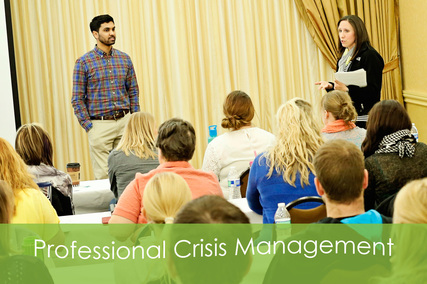
People first vs identity first: a discussion about language and disability
Image: A local disability theatre group perform a play about the daily prejudices faced by people living with disability at the Wan Smolbag Theatre and Youth Centre, Port Vila, Vanuatu, February 2013, photographer Graham Crumb for DFAT
A call to put the word ‘disability’ “front and cemntre” has, unintentionally, fuelled debate about ‘people-first’ versus ‘identity-first’ language. The disability activist Lawrence Carter-Long recently unveiled ‘Disability. #SayTheWord’ with a Facebook post-come-campaign launch.
Carter-Long was writing in the wake of President Obama’s State of the Union address, where there was no reference to ‘disabled’. He challenged his Friends and Followers: “It’s 2016. “Disabled.” Go ahead. Say the word. It’s way past time to dump the silly euphemisms and not be shy about getting good and righteously pissed off about being omitted … Put disability front and center. Consciously. Intentionally. Often. “Disabled.” It’s okay. Simply #SayTheWord. Sing it. Own it. Please.”
It was a call to action. It was about, as Carter-Long wrote in a follow-up post: “The President shouldn’t be afraid to say ‘disabled’. Inclusion shouldn’t be an afterthought either. He and every other elected official should feel like we’re a constituency that they are going to have to reckon with. Businesses too. Schools as well. The movies we watch and the TV shows that are supposedly about “us” too.”
The initial post drew many supporters, but took an unexpected turn when some comments interpreted Carter-Long’s challenge as a question of ‘people-first’ versus ‘identity-first’ language.
Time to move on from ‘people-first’ language?
One reply stated: “I may be part of the minority, but I don’t want my son labeled as ‘disabled’ – he’s human, he’s male, he’s an adult, he’s unable to walk without assistance, he’s dealing with brain injuries, he’s funny, he’s loving, he’s compassionate – but he’s not ‘disabled’. He’s a person living with disabilities.”
Another wrote: I think I agree with (above). I am a complete, complex human. Part of that complexity, part of what makes me whole, is that I live with a disability. I prefer “person first.”
Carter-Long responded: “Language – along with understanding and evolution – marches on. What seemed progressive decades ago can be regressive now which is, I reckon, as it should be.”
Another wrote: “I will never understand the idea that being disabled is negative. I am autistic. I am disabled. This is my reality. To say that I need to call myself a person with a disability automatically puts the disability on a lower footing.”
The social model of disability
Advocates of ‘people-first’ and those in favour of ‘identity-first’ both claim foundation in the social model of disability. The social model, in short, says people with physical or developmental impairments are ‘disabled’ by a society that does not recognised them and what it takes for them to be included as productive, active and valued members of the community. The common stance unintentionally muddies the water for those tasked with fair and accurate representation of people and issues – like journalists.
As a journalism lecturer, I include lessons and discussions on the way disability is presented in news media. One of the discussions with my students is about the use of ‘people-first’ language. Developed in the early 1970s, it has a long history, and, essentially, it seeks to draw attention to the person ahead of the disability. It encourages a ‘see the person, not the disability’ approach.
The Australian approach
Governments across Australia and the globe, along with NGOs, have established media guidelines on disability, and the use of ‘people-first’ language is a staple instruction for many. Australia’s peak disability advocacy organisation is People With Disability Australia (PWDA). The PWDA web site includes a section on terminology, where it states preference for people-first language.
PWDA is far from alone in its use and encouragement of people-first language. Kathie Snow, for example writes: “People First Language puts the person before the disability, and describes what a person has, not who a person is. Are you myopic or do you wear glasses? Are you cancerous or do you have cancer? Is a person ‘handicapped/disabled’ or does she have a disability?”
The Unit







0 Comments